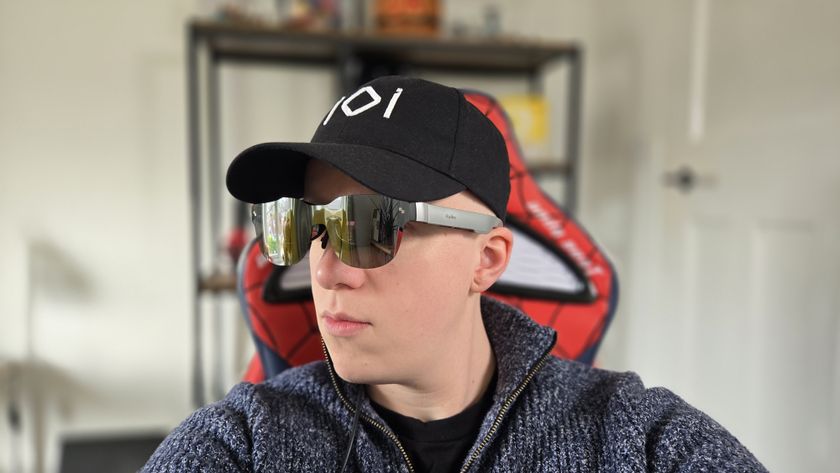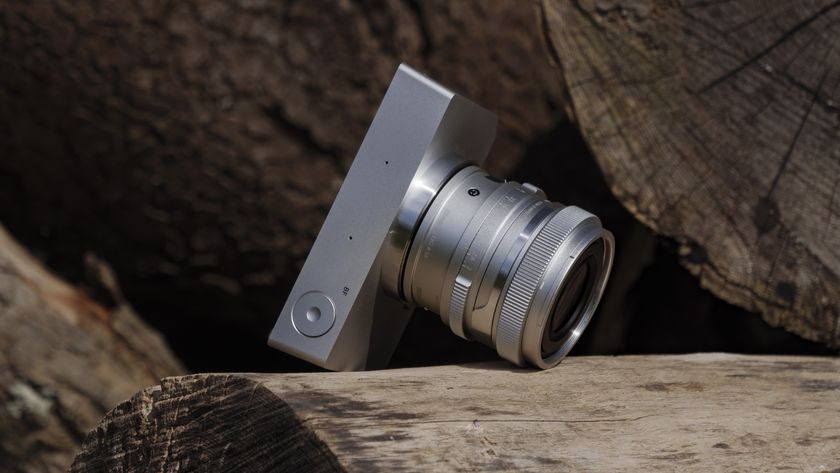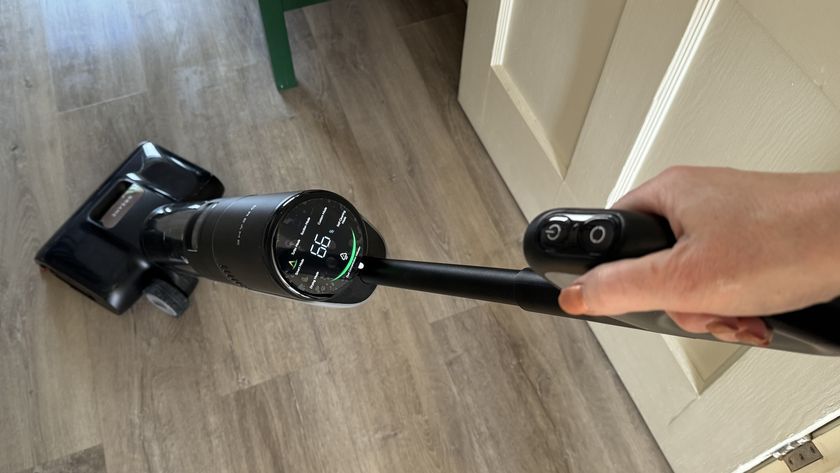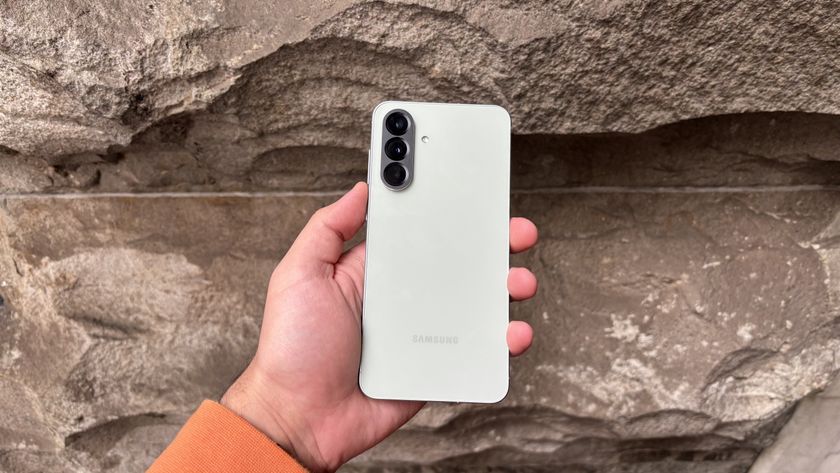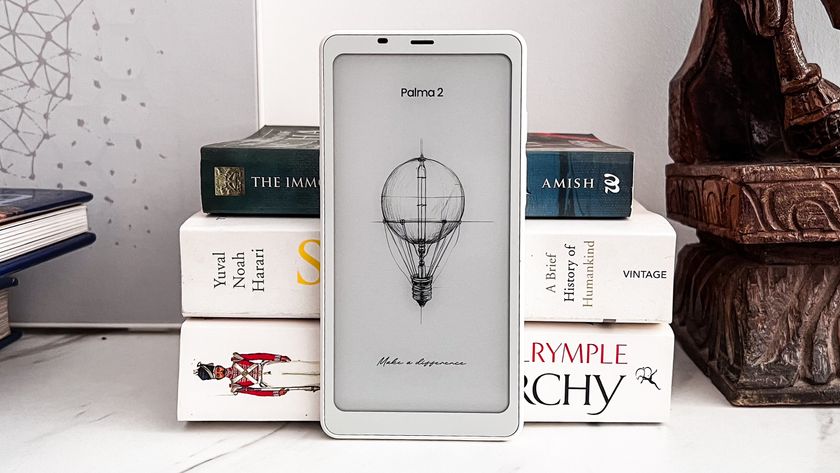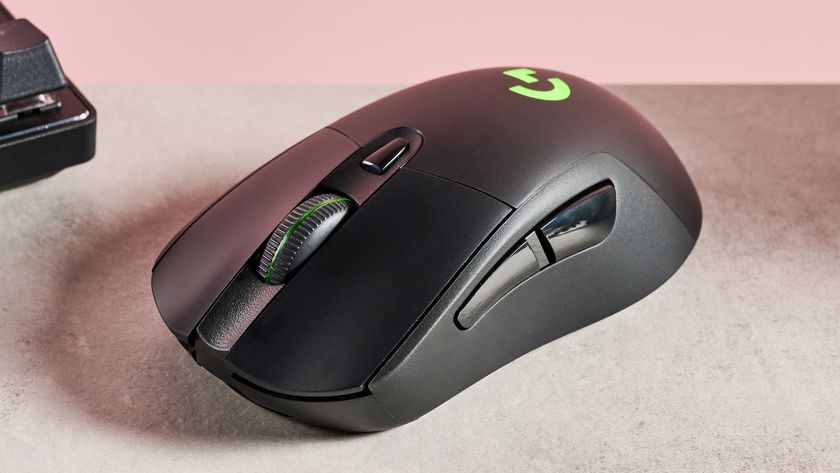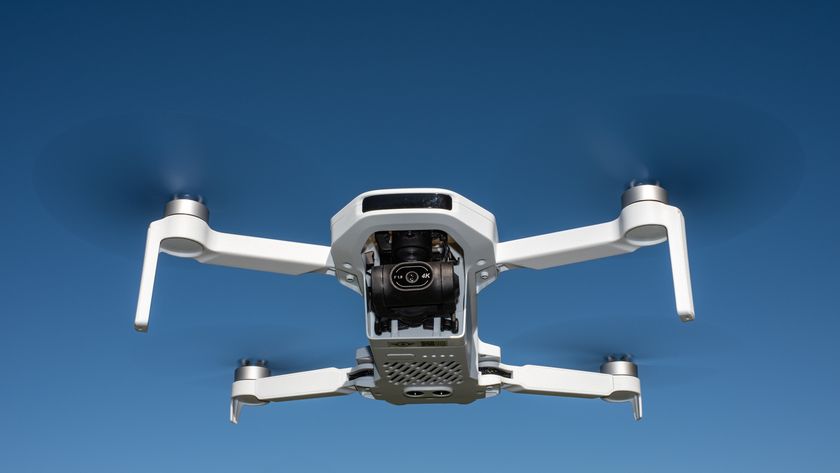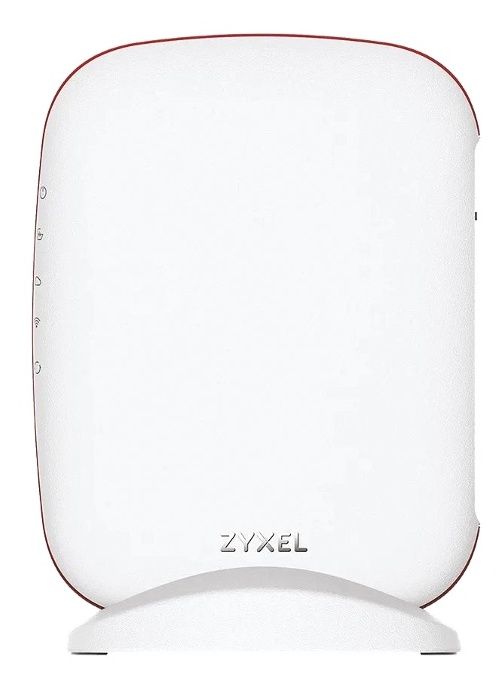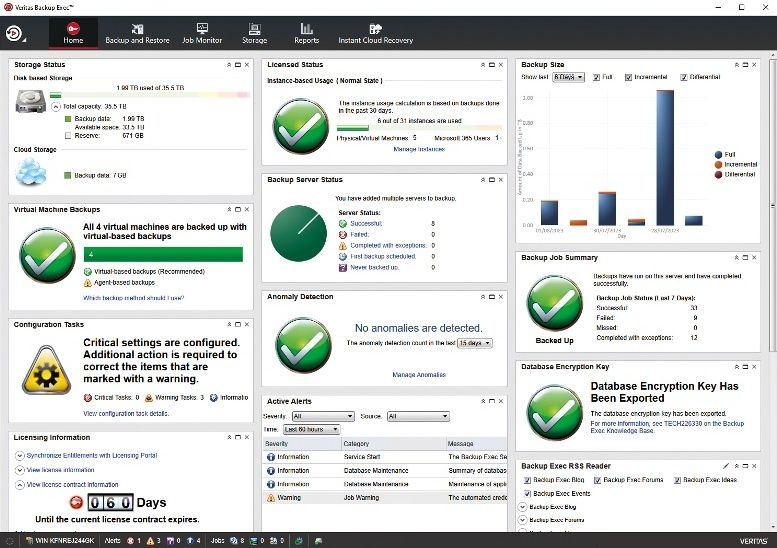Why you can trust TechRadar
Not surprisingly, we want to kick this section off by looking at the impact of the UE65HU8500's curved screen. Specifically, is it really 'made for one' rather than a family-friendly technology?
It's all about viewing angles. A long-held fear is that using a curved screen will make the picture uncomfortable to watch for anyone not sat in the perfect place - directly in front of, and at exactly the right distance from, the TV.
But due in part to the fact that the curve isn't actually very severe, the viewing 'sweet spot' issue isn't nearly as limiting as you may have feared. In fact, in some ways the UE65HU8500 actually supports off-axis viewing better than Samsung's flat TVs.
The thing is that the new panel Samsung has created for its curved LED debut loses no colour saturation or contrast, even when viewed from as much as 35 degrees either side of directly opposite.
That means that anyone who's watching the TV from within a 70-degree arc will get perfect colour and contrast. Whereas moving even slightly off axis with Samsung's flat TVs in the past has tended to cause at least parts of the screen to lose colour saturation and contrast.
Geometry
The 35-degree either side situation also applies to the UE65HU8500's picture geometry. Stay within the 70-degree safe arc and you don't feel like the curve is messing up the image's geometry.
It's true that the benefits of the curve diminish the further off axis your viewing angle gets, but crucially the curve doesn't actually start to cause distracting geometry problems until you get past 35 degrees either way. This means the UE65HU8500 supports a much wider acceptable seating area than you'd expected, especially if your room is quite large and you're not sat too close to the screen.
It's worth saying that the effective viewing area would be reduced with a smaller curved screen, so the advantages of curving a screen will likely diminish as the screen sizes get smaller. But nonetheless, the fear that curved TVs might only support one or two viewing positions is largely unfounded.
The curve isn't evil
If you're paying attention you'll have noticed that the word 'benefits' was used a moment ago when discussing the curve. The use of a curved screen can actually enhance the viewing experience, creating a feeling of being more immersed in the pictures you're watching.
This is chiefly thanks to the way it creates a greater sense of depth, and gives you the impression that some of the picture information is wrapping around into your peripheral vision, just like the real world does.
This extra sense of immersion from the curve is a subtle effect for sure, but it is definitely there. We suspect it's being increased by the work of Samsung's depth enhancement processing. The depth boosting aspect of the curve is, as you might expect, particularly obvious and handy when you're watching 3D sources.
Curve issues
While it's fair to say the UE65HU8500's curve has left a much better taste in my mouth than expected, it's not without its issues. Get outside the 70-degree viewing arc discussed previously and the image does start to become tiring to watch, as your brain tries to compensate for the way the image distorts at this angle.
Get far enough down the TV's side and you even start to see the frame of the TV curling across in front of some of the picture, which clearly isn't a great thing...
However, the bigger problem is the effect the curve has on reflections. If you happen to have a bright light source opposite the screen the curve can cause the reflection of this light to stretch across further than would be the case with a flat image. Occasionally the curve can even cause a double reflection.
To be fair, the UE65HU8500's screen structure does a much better job of 'soaking up' light reflections than previous curved demo units. And the reflection problem doesn't tend to be an issue with general sunlight and downlighting; it just happens when a light source is directly across from the screen. If your living room set up is likely to give you such a potential reflection, then you may need to stick with a flat TV or do something to adjust your room layout.
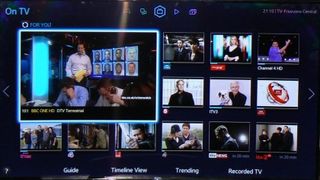
Native UHD playback
Moving on from the pros and cons of the curve, next under the microscope is the UE65HU8500's UHD resolution. It is a joy to behold.
Native UHD content looks mesmerising. The quadruple resolution is beautifully expressed, creating images of stunning density, gorgeous detail, spectacular realism, immaculate colour blending and enhanced depth. The extra detail allows objects to be resolved further into the distance than normal HD screens can manage.
The 65-inch screen is easily big enough to make the UHD advantage over HD blatantly obvious. Though the UHD advantage is obvious on pretty much any size of screen.
The UE65HU8500's native UHD pictures actually look even crisper and cleaner than those of its 2013 UHD sets, thanks to a number of key improvements to the general image quality.
The most immediately obvious step forward comes with colour, as Samsung's new panel and 'PurColor' colour processing engine combine to produce a much more dynamic and subtly distinguished colour range. Having so much more colour range to work with does wonders in making the extra detail in the image look even more precise.
Contrast
Also boosting UHD picture quality is the TV's outstanding contrast performance. Samsung has long had a knack for getting deeper black levels out of LED LCD TVs than most rivals. It's taken this prowess further than ever before with the UE65HU8500.
Provided you reduce the set's backlight setting to around eight or nine (unless you're viewing in a very bright room), dark scenes benefit from black colours that really do look black. More importantly where the screen's UHD technology is concerned, the UE65HU8500's black level response is so effortlessly achieved that even the darkest corners of an image contain impressive amounts of subtle greyscale/shadow detail information, enhancing the image's UHD appearance.
There's UHD-enhancing improvement, too, from the UE65HU8500's motion processing. The extra processing power within the UE65HU8500 means you can now use the motion processing system to take away LCD's usual motion blur, without pictures exhibiting the usual nasty unwanted processing side effects.
4K sources ahoy?
At this point it needs to be stressed that our tests of the set's native UHD abilities had to be made using the same compilation of demo content we used last year. There's still no readily available native UHD content out there that normal consumers can get their hands on.
This situation is soon going to change (a bit), thanks to Netflix launching its 4K streaming services (to anyone with a 15Mbps broadband connection). Samsung are also launching a 4K server for use with its TVs, containing five pre-loaded movies and allowing download of up to 50 more over the year ahead.
Nonetheless, it remains the case that for some time to come the UE65HU8500 will be spending the majority of its time upscaling HD rather than playing native UHD. So it's great to discover that the UE65HU8500's upscaling is nothing short of outstanding.
4K upscaling
Samsung's UHD upscaling was impressive enough last year but, presumably as a result of the extra processing power now available, the UE65HU8500 takes things to a whole new level. Its genius lies in the way it manages to add huge amounts of detail and clarity to HD images without exaggerating source noise or making the image look too gritty.
There is still clearly see a quality difference between upscaled HD and native UHD content. But the gap is smaller than it has been before, making the UE65HU8500 a new upscaling benchmark.
3D
Donning a pair of the 3D glasses provided with the TV and powering through Gravity and The Hobbit on 3D Blu-ray continues – mostly - the picture quality love-in. The extra detail of the upscaled UHD 3D images is palpable compared with passive 3D images, and this extra resolution makes the 3D world feel more realistic and immersive.
The screen's superb contrast helps enhance the depth of the 3D picture too, and the enhanced motion processing really comes into its own with 3D. This allows you to use the motion system on a high enough setting to greatly reduce the screen's native 3D judder without the image falling prey to many distracting artefacts.
The UE65HU8500's 3D efforts aren't flawless, however. For starters the 3D picture preset pushes the backlight too hard, leading to signs of backlight clouding in dark areas. I'd recommend reducing the backlight level until such clouding disappears.
The presets also set the sharpness level of 3D pictures too high, resulting in some over-stressed details and edges. So again, nudge down the sharpness until this flaw becomes less aggressive.
The final, less easy to defeat, problem with 3D images is some slight interference from crosstalk ghosting. But this is seldom aggressive enough to be truly distracting, and resolution fans will likely consider it a tolerable price to pay for the extra resolution delivered by the active 3D upscaling.
Input lag
There's one more general picture quality concern that needs to be reported: slightly high input lag. Even using its Game preset mode it takes the UE65HU8500 around 62ms to reproduce pictures after receiving picture data at its inputs. This is around double what I'd like to see (and double what you'd usually see from Samsung TVs), and as such has the potential to marginally damage your performance with reaction based video games.
John has been writing about home entertainment technology for more than two decades - an especially impressive feat considering he still claims to only be 35 years old (yeah, right). In that time he’s reviewed hundreds if not thousands of TVs, projectors and speakers, and spent frankly far too long sitting by himself in a dark room.
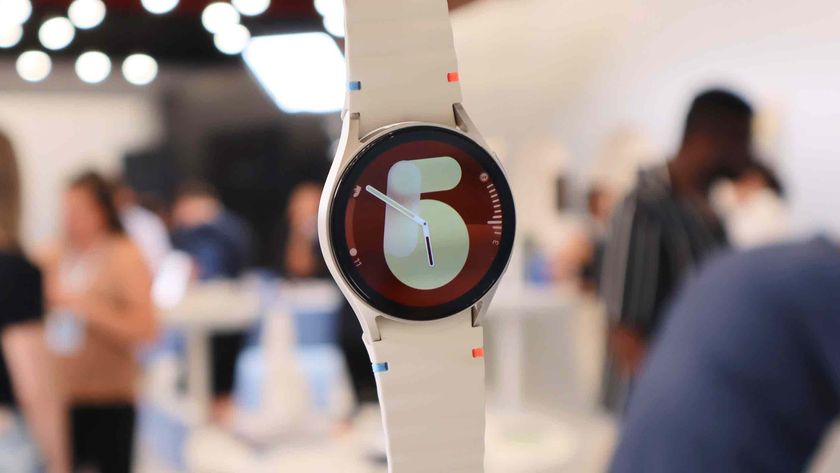
New Samsung Galaxy Watch 8 leak again confirms return of the Classic model
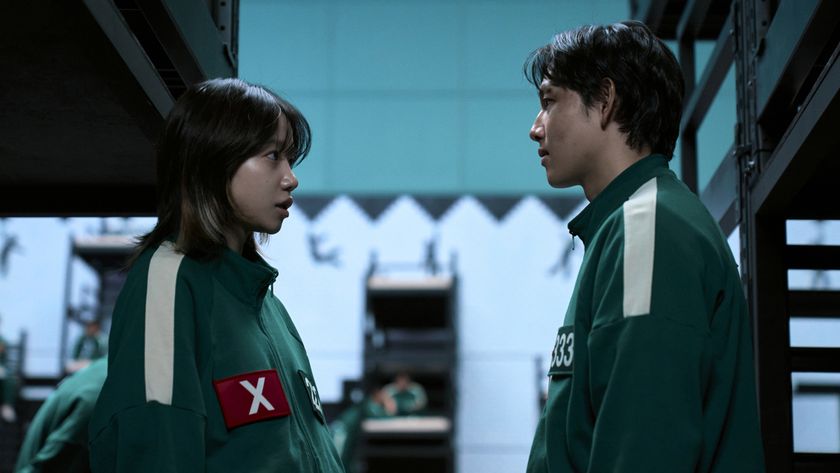
Netflix movies and shows are now available in over 30 languages – here's what you need to know

Google’s new Battery Health assistance will intentionally shorten your Pixel 9a’s battery life – and you can’t turn the feature off


